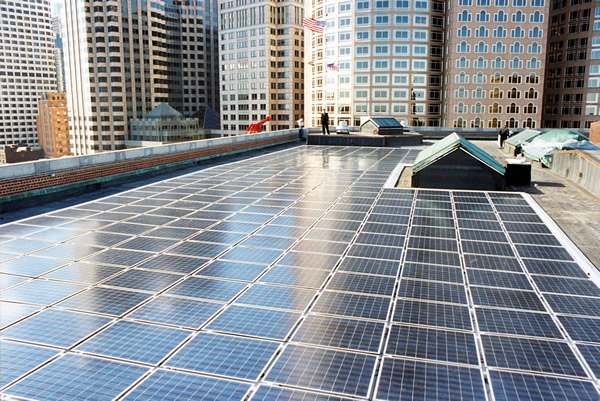In general, putting all options on the table seems like good policy advice and normally it is. With respect to energy and climate policy it is a way to avoid antagonizing proponents of conventional energy sources. In the context of phasing out fossil fuels, it really boils down to the two carbon-free sources with the greatest potential: solar and nuclear. The resource base that both solar and nuclear rely on both greatly exceed all expectations for the world’s energy needs. What is poorly understood is how incompatible these two sources are with each other. There are both technical and non-technical dimensions for this incompatibility.

Let’s start with the technical dimension first, although the non-technical dimension may ultimately be the more significant. Nuclear power is a baseload technology. This means that for both technical and economic reasons, a nuclear power plant must always run at its rated output. It cannot be ramped down in any significant way. In fact, the Chernobyl accident was caused by an unauthorized attempt to operate the reactor at a low power level. If it is turned off, it takes several days to get back on line.
Contrast that with what is needed to complement substantial use of solar power. In the middle of the day, other resources will need to be ramped down and then at sunset they will need to be quickly ramped up. In other words, a power grid with substantial solar needs to be complimented with flexible resources that can be turned on and off and can ramp up and down quickly. The penetration of solar into electric power grids will be limited by the amount of inflexible nuclear.
Centralized vs Decentralized Energy Technologies: Economic and Security Implications
Despite recent research interest in smaller reactors, nuclear power is an inherently centralized technology, while solar power is inherently decentralized. A nuclear plant represents an incredible concentration of power in one place. The owner of this plant controls a lot of thermodynamic power that translates into financial power. Concentrations of power are antithetical to a democratic society. In the case of nuclear power, this is exacerbated by the security requirements of the technology since spent fuel can be made into a weapon of mass destruction.
By contrast, the sun shines everywhere. Although a large centralized solar plant is somewhat less expensive than many smaller, distributed solar plants, that cost advantage is less important than the reliability advantages of distributed power. Also proponents of decentralized energy resources would argue that while there might be economies of scale in the installed costs of utility-scale solar, the delivered cost of distributed solar is competitive. A centralized plant requires investments in new transmission capacity and is vulnerable to sabotage, while a properly designed distributed plant can continue to serve load even when the larger power grid is unavailable.
The choice between centralized sources like nuclear and decentralized sources like solar isn’t just about cost, but about what kind of society we will live in and any new nuclear plant will mean less opportunity for solar.

This article is based on an out-dated view of nuclear. Many places do operate nuclear flexibly to meet load, like in France. It’s an economic constraint, not a technological one that stops them from load-following. New SMR designs, like NuScale, have done modeling to show how their design would work well to balance variable renewables. I’d love to see some capabilities in HOMER to model micronuclear (<10MW) because they are beginning the licensing process in the U.S.
Hi Jessica,
Thank you for your comment. For the rest of our audience, which might not understand the context of this remark, the Breakthrough Institute is a well-known, single-issue, nuclear lobbying group.
Sincerely,
Lili Francklyn
I disagree in part, Peter, ’cause I believe we should abandon nuclear for it’ll be hopelessly uneconomical (at least for the next 12 years), whereas we need to generate electricity through rapidly deployable gigantic solar PV (particularly Floating Solar on hydroelectric basins, water reservoirs, lagoons) wherever is there GHI>2000kWh/m2 and transmit it via UHV power lines (better underground, cheaper and safer). May we validate or discuss such hypothesis using your HOMER as if the US were a “great mini grid”?
Dear Mr. Monari,
This is a very interesting and provocative question. The largest scale-up of HOMER Pro that I am aware of is the City of Boulder with a population of 125,000 people. I will pass this comment along to Dr. Lilienthal.
Sincerely,
Lili Francklyn
Indeed Peter, until folks TRULY commit to changing behavior, and REALLY commit to reducing their consumption habits, commit to conservation (which I am a HUGE proponent of), I too agree whatâs wrong with putting all the options on the table?
Aside: I donât think a great deal of folks understand that no single renewable energy system technology has the same energy rich density of conventional coal, oil, nuclear or natural gas (CONG).
Just the other day, I performed a back of the envelop calculation on the power density of wind vs. natural gas. Depending on the swept area, available wind resource (sustained wind velocity), and power coefficient of the wind turbine generator, due to geographical predisposition, compared to a single natural gas well head, especially on land, physical real estate availability could be an issue.
Good overview Peter, I guess you must have considered ‘Peaker ‘ plants (primarily thinking of methane burners) the same as Nuclear since they are centralized and managed in tandem to/with older technologies , like Coal…